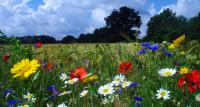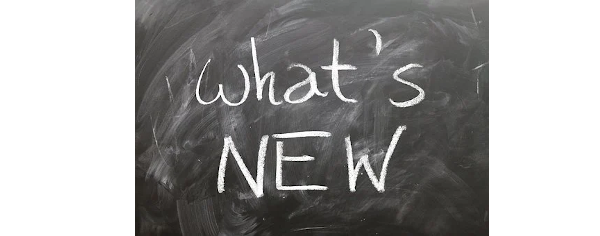
Flower strips are known to be one of the most important elements of biodiversity promotion in organic fruit growing. German apple farmer Clemens Köster is using an innovative technique for easily sowing those: By separating the central part in the seeder, the flower strip seed can be sown separately. Thanks to the EU-funded project BIOFRUITNET this effective technique has been spread beyond national borders and other organic fruit growers have been able to learn about it and many other innovations.
Over the past 3.5 years BIOFRUITNET has collected and synthesized existing practical and scientific knowledge on organic fruit-growing, distributing it widely among the EU countries through easy formats like e-learning, podcasts, videos and short articles. Moreover, farmers from all over the EU took part in visits to demonstration farms, exchanging knowledge and creating strong networks of organic fruit producers and other stakeholders in the sector. The project was coordinated by Naturland, bringing together 16 partners from 12 European countries.
Clemens Köster is just one out of a great many of organic fruit Farmers who contributed their expertise to the project. His farm is located in Northern Germany, within the largest fruit-growing area in Northern Europe (“Altes Land”) and thus perfectly suited to test and establish practices and to spread them beyond the country’s borders. During a farm visit of BIOFRUITNET in summer 2022, hedges were also presented as a measure to increase biodiversity in orchards. But not only this advantage can be highlighted: Birds of prey often nest in higher trees of hedgerows, which eat the mice in the plantations and thus increase tree health. Furthermore, they serve as protection against the drift of conventional pesticides onto the organic areas if they are planted on the border to neighboring conventional farms.
As another example, advisor Bastian Benduhn from Öko-Obstbau Norddeutschland talked about anchor plants. EU fruit farmers were able to inspect those on-site and acquire valuable knowledge about the measure during the farm visit in 2022 and exchange ideas with the experts. They were also provided with insights into the positive effects that the anchor plants have on indifferent aphid populations and their predator fauna. Subsequently, a short video on the event was published online. Thus, interested parties can find out more about measures to increase biodiversity in organic orchards.
In addition, soil management and fertilization as well as plant protection against diseases and pests are the most important areas for which many individual farmers in Europe have already established solutions, like Clemens Köster, and research has been carried out. However, this knowledge has not been more widespread, and language and geographical barriers have often limited the exchange among EU organic farms as well as between science and practice.
Within BIOFRUITNET, such farmers’ experience and their best practices were the starting point to foster knowledge flow and support European organic fruit growers. The most concerning obstacles to the organic pome, stone and citrus fruit growing systems in northern, central and southern Europe were pinpointed by information collection and analysis. The results are gathered in several materials (30 short technical videos, 100 practice abstracts, five podcasts and three e-learning courses) available in different languages on the project website www.biofruitnet.eu. By creating this European knowledge network, the project work will have a long-lasting effect beyond the end of the project and support the EU’s “farm to fork” strategy target to have 25% of the EU’s agricultural land managed organically by 2030.
HERE an explicative video
Source: BioFruitNet



